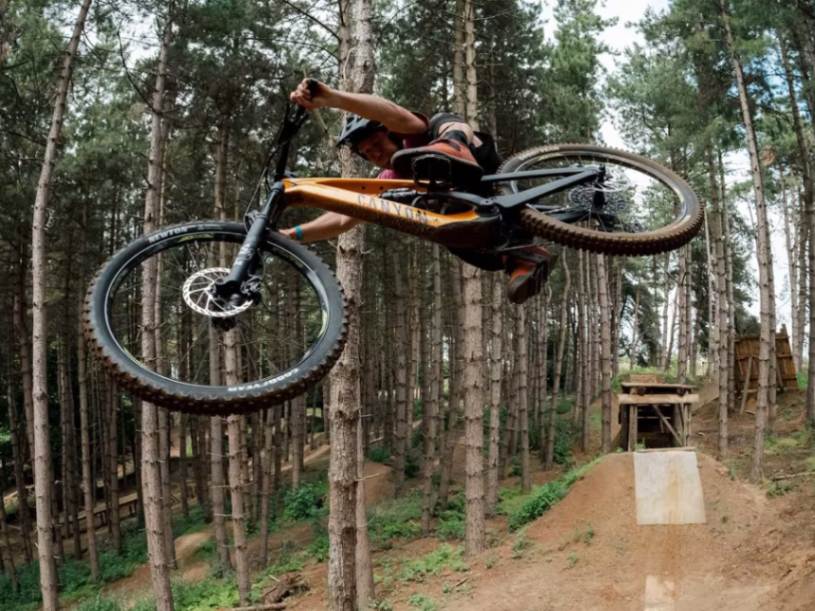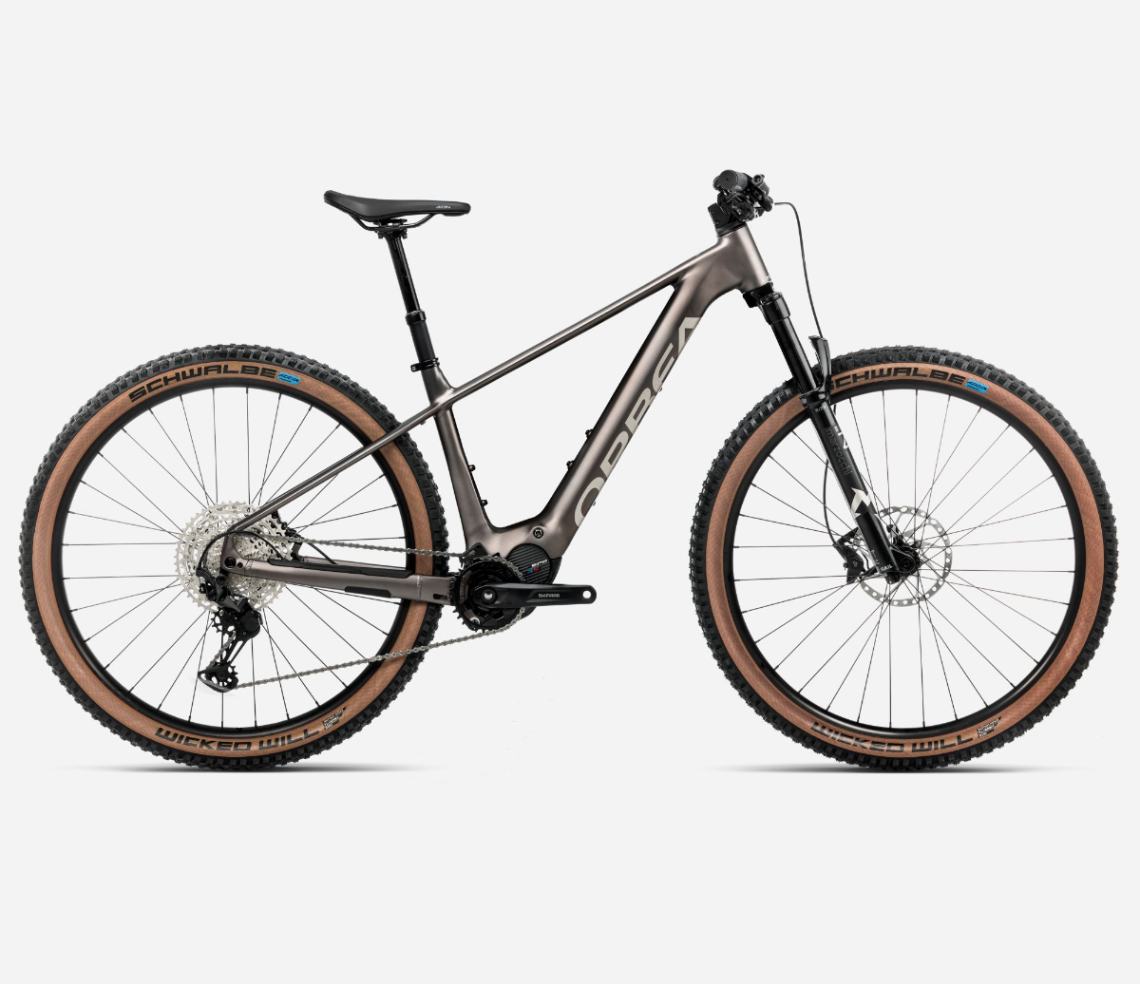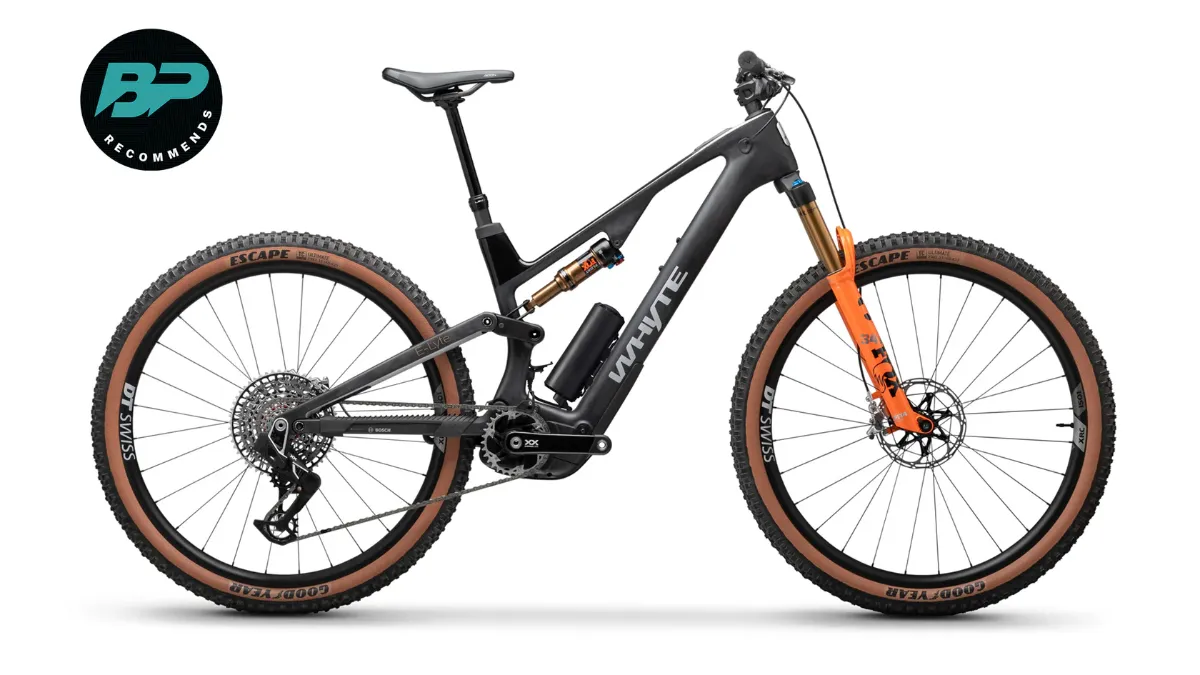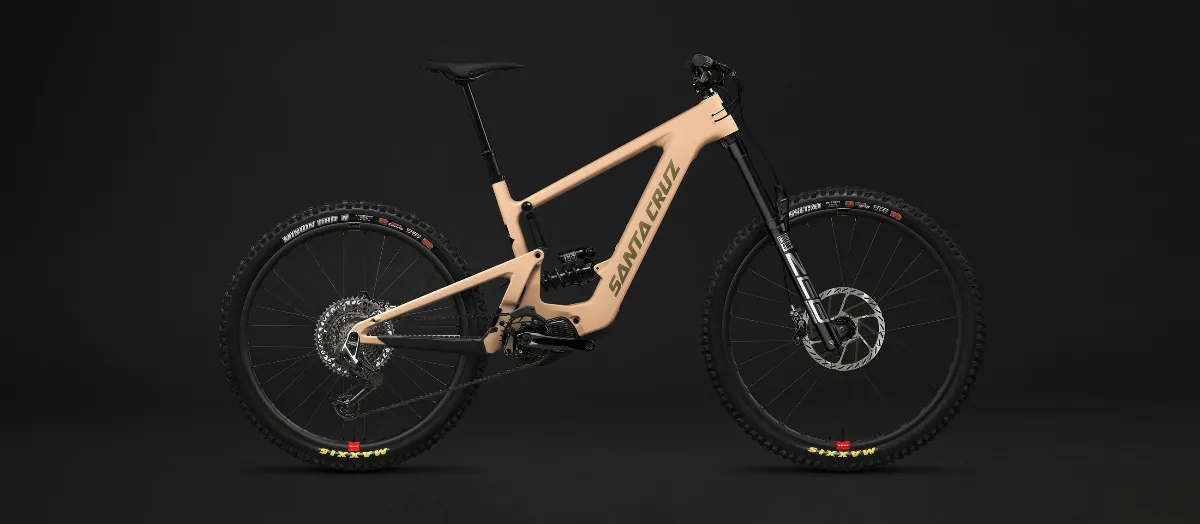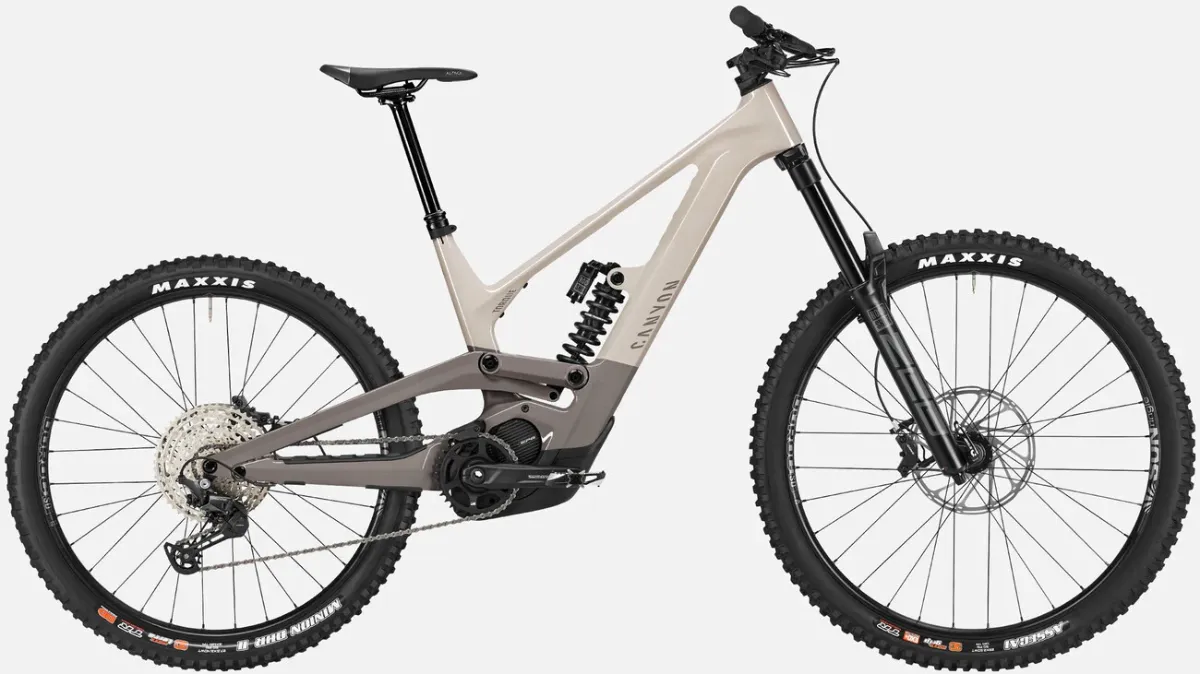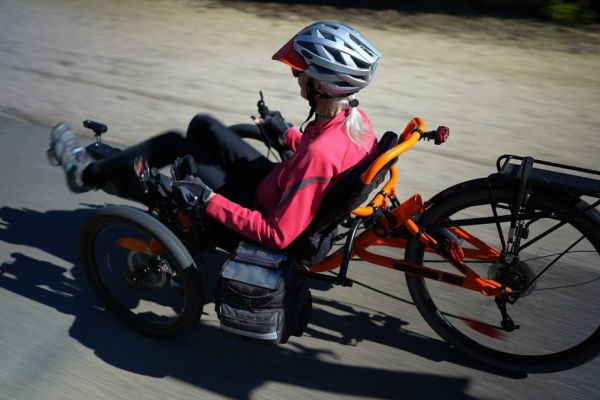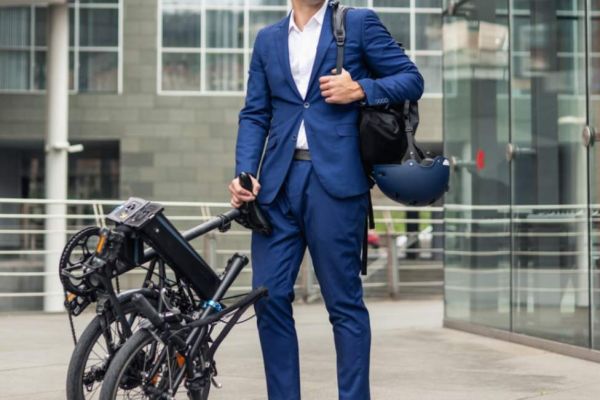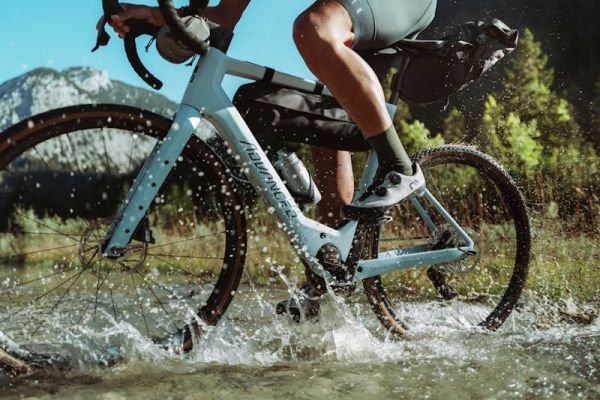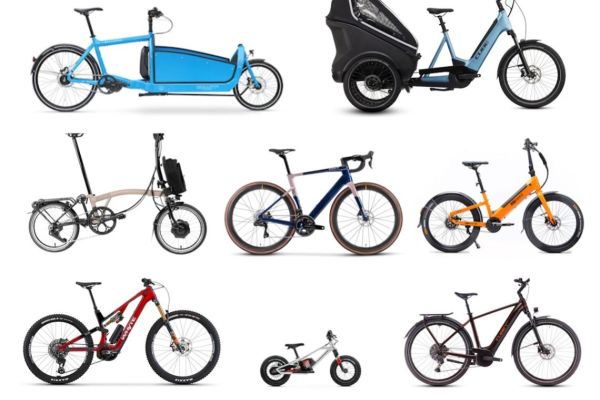Electric mountain bikes: The definitive guide
Mountain bikes are fun to ride and versatile, from getting out into the hills to messing around in the woods. Electric mountain bikes take things a step further.
Key takeaways
-
There are a lot of options in the MTB market, and electric mountain bikes multiply that up even more. Think carefully about your needs.
-
An eMTB is a full system, you can't look at any one feature or statistic in isolation and expect to make the right decision based just on that.
-
e-bike technology is progressing rapidly, with motors getting lighter and more compact for a given power and torque and batteries dropping in weight and volume for their capacity.
Mountain bikes as we know them were invented in the late 1970s and really came into prominence in the 80s and 90s with the "mountain bike boom" that rejuvenated the bicycle market generally. Designed for riding off-road, the upright riding position, wide gear range, more powerful brakes and chunky tyres of mountain bikes made them a popular option for just riding around too - MTBs proved much more user-friendly than road bikes and cooler than traditional town bikes.
Since the early days the mountain bike market has fragmented and spread, with a vast range of types and styles of bike designed for different kinds of riding (largely based on the relative importance of going uphill or along versus going back down again). And that's before considering the motor and battery options of e-bikes. It's a confusing sector, so let's see if we can make some sense of it.
If electric mountain bikes don't meet your needs, explore our guide to e-bike types to find something more appropriate.
What to look for in electric mountain bikes
Drive systems
There are plenty of hub-motor emountain bikes out there, falling into two main categories. Hub motors are a popular choice for less expensive eMTBs as the motors themselves are cheaper and it's easier for the bike manufacturer to design the bike itself - the designers really just need to accommodate a battery. You'll also see hub motors on more expensive mountain bikes designed with low weight in mind, as the frame designs needed for a mid-drive motor to tend to be bulkier and heavier.
If a mountain bike has a hub motor it's best if it's at the back. The demands of off-road riding and steep hills mean that the front wheel often has less weight on it than the rear, so driving the front wheel is likely to lead to wheel spin.
The majority of off-road e-bikes use mid-drive motor systems, though. The advantages of this layout include putting the weight of the motor and associated gearbox low down on the bike and roughly central between the axles, giving much more even weight distribution and improving handling. Moving the weight of the motor away from the rear wheel is particularly beneficial for bikes with rear suspension, as the wheel it's what's called "unsprung weight" (ie it's not isolated by the suspension) and the lower the proportion of unsprung weight of the total weight of the bike, the better for suspension performance.
A very important benefit of a mid-drive motor system for an MTB, though, is that the motor will drive the rear wheel through the standard multi-gear transmission that all mountain bikes have. This allows you to make the most of the motor assistance under different circumstances, whether cruising along the flat, gentle climbing or scrabbling up steep, loose slopes.
While continuous power output is limited to 250W on bikes that comply with the Electrically Assisted Pedal Cycle regulations in the UK and similar regulations elsewhere (and not complying with those severely limits the places you can legally ride), peak power can be considerably higher. Many eMTBs will boast peak power output of 750W or more, but only briefly. The most important characteristic of the motor, though, is torque - effectively how hard the motor can turn. To climb steep hills by pedalling you'll eventually need to push the pedals harder, so the more the motor can do this, the better.
Some MTB manufacturers draw a distinction between lightweight drive systems that provide some additional pedalling support and "full power" systems that can propel the bike without much effort from the rider. As technology improves the line between these categories is becoming blurred but it's still worth considering where manufacturers see their bikes as fitting on that spectrum.
Battery capacity
Most eMTBs offer some degree of flexibility with batteries. Range extenders are a popular option, with the bike's main battery (usually integrated into the down tube) being supplemented by an extra piggyback battery that you can fit when you need it. On some bikes the availability of a range extender gives the designers freedom to spec a smaller, lighter main battery for a more nimble, lively bike on short rides and only incurring the weight penalty of more range for longer rides. Or the bike may come with a large battery as standard, but fitting a range extender lets you either ride even further or to use a higher level of pedal assistance more frequently.
Software and ride modes
While important for all kinds of e-bike, the controllability of the motor is particularly crucial on a mountain bike. You're dealing with unpredictable conditions, varying surfaces and levels of grip, different styles of trail and so on, so having a bike that responds appropriately makes the whole experience more fulfilling. Which is, after all, the point.
All drive systems have at least a choice of ride modes, with three steps being the usual minimum (and, some would argue, as many as you need). Typically you'll find an "eco" or low-power mode that delivers a small amount of assistance with maximum range; a maximum, turbo or boost mode with full assistance but reduced range; and a middle setting that balances the two. Handlebar or frame-mounted controls let you switch between modes, so you can pick and choose depending on conditions. Perhaps you'll switch to maximum for a particularly challenging hill, or drop down to low power to extend range at the end of the day.
Some bikes will have more granular settings with multiple assistance levels, and most offer some degree (or in some cases, a bewildering range) or customisation options so you can fine-tune how each setting behaves. The main characteristic is the level of assistance on offer, that is the ratio between the rider's input and the motor's contribution. A typical rider can expect to be able to produce 100W themselves, so 100% assistance would mean the motor contributing the same for a total of 200W. You might decide to make that your everyday setting, with 20% for low power and 200% maximum.
An important characteristic (and one that varies significantly between different drive systems) is the ride feel. Some systems have a subtle, "soft" power delivery that comes in gently and ramps up - good for control on tricky terrain but lacking immediacy if you need a sudden push. Alternatively you may have punchy power that comes in quickly at a high level - potentially very useful but demanding a higher level of control from the rider. Again, the delivery can often be customised.
At the other end of the scale you'll find differences in how the power cuts out, either when you stop pedalling or when you reach the maximum assisted speed (25km/h or 15.5mph in the UK, Europe and some other territories). Different systems do this more or less abruptly. Some will "run on" briefly when you stop pedalling, which can be handy on bumpy climbs when rocks or roots prevent you from consistent pedalling. Some speed cut-outs are quite sudden, others gently ramp down.
Hardtail or full suspension e-mountain bike?
There are two broad categories of MTB, whether powered or otherwise, and they're based on suspension - springs and dampers to isolate the frame and rider from rough ground. Hardtail e-mountain bikes have suspension at the front only, in the form of a telescopic fork. Full suspension eMTBs have a suspension fork up front too, but also a pivoting rear frame triangle linked to a shock so the rear wheel can move relative to the main frame.
Hardtails have the benefit of simplicity and the suspension fork gives lots more comfort and control than a rigid fork, but of course you get a harsher ride at the back. This is particularly noticeable on an electric bike, which is inevitably heavier than an unassisted one. That extra mass emphasises the harsher ride. It's perfectly possible to ride a hardtail eMTB at pace on rough trails, but you'll be working harder and fatiguing more quickly than on a full suspension bike.
There are a number of different rear suspension systems on offer, from simple swing arms with one main frame pivot through to sophisticated arrangements with multiple pivots and linkages. The more complex the system the more it can be tuned for particular ride characteristics but at the expense of, well, complexity and increased maintenance.
eMTB categories
Moving beyond the broad hardtail/full suspension groups, mountain bikes come in a vast array of subcategories. The ones we've listed here are the common ones but note that not every manufacturer calls them the same things and you'll also find bikes that straddle categories. Not everything fits into neat boxes, but this will give you an idea of how the spectrum of e-mountain bikes stacks up.
Cross country electric mountain bikes
For a long time the competitive side of mountain biking was dominated by cross-country racing - multi-lap races involving a mix of climbs and descents. XC racing is still a thing although in recent years courses have become more challenging in terms of features and technical difficulty, with rock gardens, drops and jumps becoming commonplace. As a result the capabilities of XC bikes have increased but they're still the lightest option. You can expect suspension travel somewhere in the 100-120mm range, often with lockout options for efficiency on smoother terrain. Typically electric bikes in this category will lean towards lower levels of assistance and smaller batteries in the pursuit of light weight, with the assumption that riders looking for this style of bike are expecting to put in plenty of effort themselves. There aren't actually that many options in this category, as even light motors and batteries make a big weight difference on a lightweight chassis.
Trail e-mountain bikes
Trail bikes are designed to be a bit more user-friendly and capable than pure race bikes. You'll find slightly more relaxed frame geometry, trading ultra-sharp handling for stability. Wheels and tyres will be wider for more grip and control, with suspension travel bumping up into the 130-150mm range. You'll often see bikes with more suspension travel at the front than the rear, aiming for something of the "poppy" ride feel of a good hardtail but still taking out the more objectionable hits at the rear. In this category you'll find a range of motor power and battery capacity, with some models going for race-style lightweight, low-assistance configurations and others pitching for all-day, full power setups.
Enduro electric MTB
If you're looking at tackling more challenging terrain, with rougher trails, higher speeds and bigger drops, but retaining a decent level of climbing ability, an enduro eMTB may be for you. These bikes aim to deliver the hard-hitting capability of long-travel suspension (typically 140-160mm of travel) and speed-friendly frame geometry but still configured to be rewardingly pedallable. Nominally enduro bikes are designed for a particular form of racing that involves timed downhill sections that you have to ride between. Most enduro bikes are never raced but the format gives you an idea of the kind of riding these bikes are best at.
Freeride / downhill eMTB
At the opposite end of the scale from cross-country bikes are long-travel, downhill-oriented bikes designed with running with gravity very much in mind. These are big, strong bikes with heavy-duty wheels, large-volume tyres with sticky rubber compounds and at least 160mm of travel. You'll sometimes see dual-crown front forks, supported at the top and bottom of the head tube to retain stiffness and strength with longer travel. Unpowered bikes in this category are either intended to be pedalled slowly uphill or not to be pedalled at all - their natural habitat is trail centres or bike parks with uplift facilities. The addition of a motor gives you access to a similar style of riding without relying on an uplift service. Electric long-travel bikes are designed with descending as their focus - getting up the hill is a necessary evil. They'll tend to have big batteries and high-torque motors - these are heavy bikes anyway, so they need more oomph but a bit more weight isn't going to be too objectionable.
Frequently Asked Questions
There are so many different kinds of electric MTB, how can I work out which is for me?
We feel your pain. A long time before e-bikes, there were just mountain bikes. More expensive ones were lighter and had higher-quality parts and everything was fairly simple. Then the market fragmented into sub-categories and niches, and then motor assistance got added to them all. But if you're getting into mountain biking with an electric bike, then it's best to avoid the specialist kit at the extremes and focus on the all-rounders in the middle. Something in the trail or enduro category with 120-140mm of travel will do pretty much everything you ask of it.
Where can I ride an eMTB?
As long as your electric mountain bike complies with the Electrically Assisted Pedal Cycle regulations (pedal assist only, motor cuts out at 25km/h (15.5mph), maximum 250W continuous power) then it counts as a bicycle and can be ridden wherever you can ride a bike. In the UK that means all off-road cycle trails and bridleways are available. Most purpose-built trail centres are e-bike friendly too.
How can I get a proper test ride?
This ought to be easier than it is, given how much some eMTBs cost and how much they vary in style and intent. A spin around the block outside a shop isn't going to tell you much. Lots of manufacturers run demo fleets and hold events at trail centres or big races, giving you the opportunity to try bikes out on proper off-road trails.
Summary
Electric mountain bikes may just be a subset of e-bikes, but they're a whole complicated category of their own. Different levels of suspension travel are suited to different kinds of riding, from easy but bumpy trails to steep, rough, jump-laden tracks. Think carefully about what kind of riding you want to do, and if you're not sure go for a mid-travel "trail" e-bike. Mid-drive motors are the best option for off-road bikes thanks to their superior hill-climbing ability.
Related content
Read more great content from ebike.help and become an electric bike expert today.

